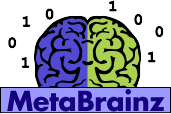Last night at 10pm,
iLike launched their beta. iLike is a social music discovery service funded by Sun founder Vinod Khosla.
iLike, like other social music sites such as
last.fm
has a substantial web presence as well as an iTunes plugin. The
iTunes plugin runs as an iTunes 'drawer' a sidebar that adds iLike
context information such as information about 'related artists' as well
as info about your iLike 'friends'

When
you play songs in itunes, info shows up in the iLike sidebar. For
instance, if the 'Related' artist tab is selected, when you play a song
by Death Cab for Cutie, you'll see songs by artists such as the Postal
Service, ColdPlay and The Shins in the 'related artists' tab.
I
found the 'related artists' to be more than a bit disappointing.
To me, the purpose of a 'related artists' recommender is to help me find
music that I don't know about that is similar to what I'm listening to
now. The iLike 'related artists' falls short in a few ways.
First, the recommendations are artist related, not song related, so no
matter what song I play by an artist I'm given the same
recommendations. If I play the Beatles 'Helter Skelter' or
'Michele' - I get the same recommendations although they are very
different songs. Second, the recommendations for the most part
were completely obvious. I like it best when a recommender gives
me some recommendations from artists that I've not heard of before, but
the iLike recommendations were (with some notable exception - see
below), were so predictable it was as if they were scraped from the
All Music Guide related artists.
Here's a set of recommendations received.
Seed Artist
|
Recommendation
|
Led Zeppelin
| Pink Floyd, the Beatles, Jimi Hendrix, AC/DC, Black Sabbath
|
Beatles
| Pink Floyd, Radiohead, U2, The Rolling Stones
|
Weezer
| Green Day, Foo Fighters, Jimmy Eat World, Nirvana, The Beatles
|
Johnny Cash
| Willie Nelson, Elvis Presley, Waylon Jennings, Hank Williams, Merle Haggard
|
Fiona Apple
| Tori Amos, Sarah McLachlan, Alanis Morissette, Sheryl Crow, Norah Jones
|
Yes
| Rush, Genesis, Pink Floyd, King Crimson, Kansas |
I did get a clunker recommendation however. When I was playing
Emerson, Lake and Palmer's Karn Evil 9 - a progressive rock masterpiece
- I was given the recommendation 'Grandma Got Run over by a
reindeer' by Elmo & Patsy, as well as 4 other christmas songs.
Clearly outside the realm of a reasonable recommendation. iLike
promises that their recommendations will get better as they get more
users. That's the classic social recommender cold-start problem - you
need lots of users to get good recommendations, but in early days,
before you have lots of users, you'll generate crappy recommendations.
I'm sure their recommendations will get better - and I hope that
eventually they can tell me things that I don't already know - maybe a
NiN recommendation for that Johnny Cash fan once in a while.
iLike
also offers a set of 'free music by new artists' in the 'related'
panel. I found the music to interesting, but generally not very
well related to the seed artist. Again, probably a symptom of the
cold-start problem. Nevertheless, it is a good source of free
indie music - I downloaded the song 'Sad Reminders' by 'the Winter
Sounds' - funny thing was that iLike couldn't find any related music to
this song - iLike recommended this song since it was related to some
Pink Floyd that I was listening to, but when I was listening to the
song, iLike didn't seem to know anything about it.
If you go to
your iLike home page on the web, iLike will give you another more
detailed set of music recommendations. This, for me, was a mix of
free mp3s as well as songs I could buy at iTunes. The top
recommendation was ... you guessed it ... 'Grandma got run over by a
reindeer'. It would be nice if iLike could tell me why they are
recommending a particular song (much like Amazon or Pandora do).
Words like "We are recommending 'Grandma got run over by a reindeer'
because you like annoyingly-cute christmas songs'." Or .. "We are
recommending 'Grandma got run over by a reindeer' because it is similar
to Emerson Lake and Palmer's opus about nuclear armageddon." would be
helpful.
iLike uploads your iTunes play history to the iLife
server, and makes this visible to all. If you are a privacy
fanatic (or even just slightly concerned about privacy), this may be a
bit disconcerting. For instance, you can look at my music play
history here:
http://www.ilike.com/user/Paul_L2. I took a quick browse through the
iLike users - its a who's who of music discovery - there's Tom, CTO of Pandora, a whole gaggle of the last.fm crew, Toby from musicmobs,
Mr. DJ Alchemi
and others. (BTW, Does DJ really want us to know that his #2 song of
all time is "Can't get you out of my head " by Kylie Minogue?)
Probably
the neatest thing that iLike has to offer is the ability to browse
through other people's music history - this harkens back to the day of
the original napster - where you could browse through the music
collections of thousands of people. Of course, the difference is
that unlike napster, when you are browsing you can listen to 30 second
low quality clip, but you can't download the song without forking over
$.99 to iTunes. iLike does have a neat compatibility score. When
you are browsing through another listener's collection - you are shown a
score that shows how well matched your music collections are.
iLike touts this ability to browse through other people's collections as
one of their key differentiators - but last.fm has been doing this for
quite some time - here's my listening history on last.fm:
http://www.last.fm/users/lamereGrowing Pains - iLike
is a beta and as such there were a few snags here and there. When
I first installed iLike, the sidebar drawer was all scrambled. It
looked like all of the tabbed panels in the sidebar were visible at the
same time. A restart of iTunes seemed to fix that. Another
glitch - if I'm listening to a song in iTunes, and then click on a song
in someone's collection to preview it, the iTunes song doesn't stop
playing - so I end up hearing two songs at the same time. Hey, but
this is a beta, so I'm sure these things will be fixed in no time.
So here's a rundown of what iLike does:
- Adds an iTunes plugin that uploads your play history
- Gives somewhat obvious related artist recommendations
- Offers a set of song recommendations
- Lets you find other users like yourself
- Lets you browse the music collections of others
- Give you recommendations for 'related' free-to-download music
I
think iLike has done well on execution. The web site and the plugin are
quite slick - and eye-friendly - but so far, I haven't seen them do
anything that isn't already being done by other social sites such as
last.fm.
They don't do social tagging. They don't do playlist generation.
They don't offer music charts. They don't expose any of their data
with a web services API. You can only listen to 30 second music
clips. Like
QLoud, they
are suffering from the cold-start problem - until they get a large
enough user base they'll continue to recommend 'Grandma got run over by a
reindeer' to progressive rock fans. Like QLoud, I don't think
excellent execution is going to let them catch up to last.fm - with its
deep set of social data. Still, it is just a beta, iLike has good
funding, an it looks like they have an excellent technical and
management team, so I'm sure iLike will be doing some interesting,
innovative things in the music discovery space soon. They certainly bear
watching.
Update - I am having fun with iLike - browsing through other people's music tastes is interesting and somewhat addictive.


 One
of the key enabling technologies for the ecosystem that will ultimately
become the celestial jukebox is a universally used, free, Song ID
system. A Song ID system unambiguously assigns an an
ID, (much like a UPC product code), to each unique audio
recording. The ideal SongID will be able to distinguish between
various performances and remixes of a song, while still recognizing that
different encodings and equalizations of a song are still the same
song. A universally used songID will allow various
music tools and services to work together. People will be able to
easily share playlists, recommenders will be able to refer listeners to
tracks in any music service provider collection. It will be easy
to find the metadata (album art, reviews, bibliographic info, lyrics)
for a song.
One
of the key enabling technologies for the ecosystem that will ultimately
become the celestial jukebox is a universally used, free, Song ID
system. A Song ID system unambiguously assigns an an
ID, (much like a UPC product code), to each unique audio
recording. The ideal SongID will be able to distinguish between
various performances and remixes of a song, while still recognizing that
different encodings and equalizations of a song are still the same
song. A universally used songID will allow various
music tools and services to work together. People will be able to
easily share playlists, recommenders will be able to refer listeners to
tracks in any music service provider collection. It will be easy
to find the metadata (album art, reviews, bibliographic info, lyrics)
for a song.




 Flickr is starting to do this. You can explore the clusters associated with a tag. For instance
Flickr is starting to do this. You can explore the clusters associated with a tag. For instance  Over at Last.FM,
Over at Last.FM, 